News
EPJ Data Science Highlight - Driven by friendship
- Details
- Published on 11 November 2012
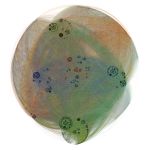
Dynamics of Facebook: the structure of the network drives friends to congregate into many small, highly interconnected communities
For the first time, the dynamics of how Facebook user communities are formed have been identified, revealing surprisingly few large communities and innumerable highly connected small-size communities. These findings are about to be published in EPJ Data Science by Italian scientist Emilio Ferrara, affiliated with both Indiana University in Bloomington, Indiana, USA and his home University of Messina. This work could ultimately help identify the most efficient way to spread information, such as advertising, or ideas over large networks.
EPJ E Colloquium - Hidden order in the liquid phase
- Details
- Published on 05 November 2012
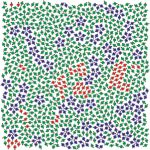
A two-order parameter model proposed to describe water-like anomalies, liquid-liquid transition, glass transition, crystal nucleation and quasicrystal formation within the same framework.
The liquid state of matter is far from being a perfectly disordered homogeneous state. In a Colloquium paper published in EPJ E, Hajime Tanaka argues that to achieve a better understanding of liquids, it is crucial to recognize that a liquid has a general tendency to exhibit local structural order, and that this order is intrinsic and universal to any liquid. In other words, there is a need for a new order parameter describing a low local free-energy configuration (this is a bond-orientational order parameter in many cases), in addition to a density order parameter.
EPJ B Highlight - Persistent sync for neurons
- Details
- Published on 03 November 2012
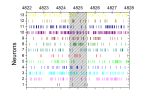
Under the scrutiny of mathematical tools designed to study complex networks, rats’ neurons reveal steady neural network coordination regardless of the animals’ behaviour
A team of Brazilian physicists working with neuroscientists studying freely behaving rats have found that their neurons often act in precise coordination over time, in a study just published in EPJ B. These findings stem from the work of Bruno Silva, a researcher at Bahia Federal University in Salvador, and his colleagues from other universities in the Northeastern region of Brazil, and suggest that neuronal networks’ memory could be explored in the future.
EPJ B Highlight - Graphene mini-lab
- Details
- Published on 03 November 2012

Physicists study fast-moving electrons in graphene as a model laboratory for massless particles
A team of physicists from Europe and South Africa showed that electrons moving randomly in graphene can mimic the dynamics of particles such as cosmic rays, despite travelling at a fraction of their speed, in a paper just published in EPJ B.
Andrey Pototsky and colleagues made use of their knowledge of graphene, which is made of a carbon layer, one atom thick, and packed in a honeycomb lattice pattern. In such material the interaction of electrons with atoms changes the effective mass of the electrons. As a result, the energy of electrons in graphene becomes similar to the photon energy.
EPJ Plus Highlight - LARES: a nearly ideal satellite to test fundamental physics
- Details
- Published on 03 November 2012
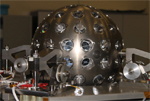
The discovery of the accelerating expansion of the Universe, thought to be driven by a mysterious form of ‘dark energy’ constituting most of the Universe, has further revived the interest in testing Einstein’s theory of General Relativity (GR). Frame-dragging in the gravitational field generated by a rotating body or by a current of mass-energy is one of the most fascinating phenomena predicted by GR. The recently launched LARES (Laser RElativity Satellite) space mission is aimed at improving of about an order of magnitude the accuracy of the previous frame-dragging measurements by the LAGEOS and LAGEOS 2 satellites, using GRACE-derived Earth gravity determinations. After some years of orbital analysis of LARES, LAGEOS and LAGEOS 2 satellite laser ranging data, we should reach a few percent uncertainty in testing frame-dragging.
EPJ B Highlight - Cocktail achieves superconducting boost
- Details
- Published on 31 October 2012

Scientists have now developed a high-performance material by mixing iron and selenium
Physicists describe how they have synthesized a new material that belongs to the iron-selenide class of superconductors, called LixFe2Se2(NH3)y, in a paper just published in EPJ B. The work was carried out by Ernst-Wilhelm Scheidt from the University of Augsburg and colleagues. This material displays promising superconducting transition temperatures of 44 Kelvins (K) at ambient pressure, thus improving upon traditional copper-based high-temperature superconductors.
EPJ E Highlight - Enigmatic Nematics
- Details
- Published on 31 October 2012
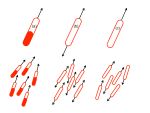
The law of hydrodynamics governing the way internally driven systems behave could explain their complex structure
Physicists use hydrodynamics to understand the physical mechanism responsible for changes in the long-range order of groups of particles. Particularly, Aparna Baskaran of Brandeis University, Massachusetts, USA, and Cristina Marchetti of Syracuse University, New York, USA, focused on ordered groups of elongated self-propelled particles. They studied the breakdown of long-range order due to fluctuations that render them unstable and give rise to complex structures, in a study just published in EPJ E within the topical issue on Active Matter.
EPJ E Highlight - DNA’s double stranded stretch
- Details
- Published on 27 October 2012
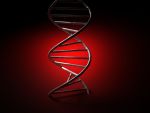
Models simulate what happens to DNA strands when stretched to the breaking point
Theoretical physicists like to play with very unconventional toys. Manoel Manghi from Toulouse University in France and his colleagues have adopted a seemingly playful approach to examining what happens to a double stranded molecule of DNA when it is stretched to the breaking point, in a study about to be published in EPJ E. Instead of using optical tweezers to stretch DNA as previously done in experimental settings, the authors focused on using a theoretical model to account for the structural deformations of DNA and determine how its mechanical characteristics could explain certain biological processes.
EPJ E Highlight - The hidden threat posed by inconspicuous stripes
- Details
- Published on 23 October 2012
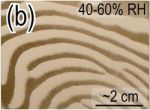
Physicists investigate the cause of striped patterns formed by fine particles deposited on surfaces
Patterns fascinate. Particularly stripes. Found in nature in zebras, they are also found in the most unlikely places, such as powdered drugs’ mixing vessel walls. In an article just published in EPJ E, Nirmal Thyagu and his colleagues from Rutgers University, New Jersey, USA, propose a traffic model to predict the formation of different patterns, ranging from stripes to spots.
EPJ Photovoltaics indexed in CAS
- Details
- Published on 23 October 2012
EPJ Photovoltaics is now indexed in the Chemical Abstracts Service (CAS) database.
Chemical Abstracts Service (CAS) monitors, indexes, and abstracts the world's chemistry-related literature and patents. These databases offer many scientific disciplines, including biomedical sciences, chemistry, engineering, materials science, and more.




